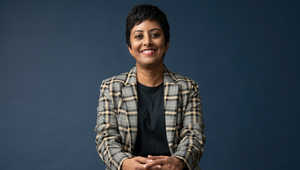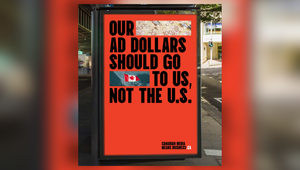
Creative Inspiration Series: Just the Two of Us

[Photo by Markus Spiske on Unsplash]
Part of having good teamwork is communication, brainstorming, critiquing – and even having a bit of creative tension. Historic pairings of all kinds have created art, music and literature that stands the test of time – Andy Warhol and Jean-Michel Basquiat, Paul McCartney and John Lennon, and F. Scott Fitzgerald and Zelda Fitzgerald are just some of the successful examples.
When we asked creatives about their tips and tricks for creating in the most inspiring ways, they looked to each other for both support and critique, continually evolving together. While some “tear each other's suggestions apart”, others brainstorm and even find their best ideas to discuss, and finalise. There’s no right or wrong way to do it, but I’m sure you’ll find that each pair has its own quirks.
Duos from NM Productions, BETC, and Harbour Collective tell LBB’s Nisna Mahtani how and why they function well enough to inspire each other while working together.
Michael O'Connor and Kaine Horey, directors, NM Productions
"There's something here, but are these first thoughts or second thoughts?" It would be impossible to avoid forming a shorthand after working with the same person for seven long (and incredibly exciting…) years. First, second and third thoughts are one of the many ways Kaine and I judge our ideas and guide the creative process.
Simply put, first thoughts are the ideas that come straight into your head when you're trying to solve a problem. The ones you most likely plagiarised, aren't that engaging, and almost everyone in the audience expects.
We use this kind of tool to, essentially, tear each other's suggestions apart. Because, fundamentally, Kaine and I believe in creative tension. We believe that a project is a thing that must be kept taught. Every team member must pull in their own direction, with their own ideas and their own input. Even when we might initially agree on something, we'll take turns finding holes, looking from other angles, and constantly challenging the abstraction to be better.
That might sound a little brutal, but I think one of the reasons we've worked together successfully for so long is because we don't take things personally. And, while I can't say that level of emotional robustness would hold up to the opinions of anyone when working in a duo, I think it's vital. If you're not sharing your own truth for fear or to spare feelings, you're most likely making a mistake.

[Pictured above: Michael O’Connor (L) and Kaine Horey (R)]
Baptiste Szuwarski and Jérémy Treccani, creatives, BETC Paris
For us, the best way to find ideas is to pretend not to be looking for any. We always start our sessions by talking about references from movies, ads, or other ideas that answered the same problem that we are trying to solve. In a nutshell, we avoid putting too much pressure on ourselves. And the first ideas come by themselves along with our discussion.
We are lucky that, at BETC, there are many spaces that we can use for brainstorming: small meeting rooms, the kitchen, the rooftop, and comfortable sofas almost everywhere.
We like to change our scenery. It helps us rekindle the conversation and find new ideas or get a new perspective on some things. We tend to have our favourite places to go. They act a little bit like lucky charms, where we find our best ideas (at least, that’s what we like to tell ourselves).
And the most important thing is that we are friends after all. We can be candid with each other, with no judgement. And we have no fear sharing our good and bad ideas. And that’s why, after more than 12 years of creative partnership, we still enjoy working together so much.

[Pictured sat on chairs: Jérémy Treccani (L) and Baptiste Szuwarski (R)]
Thibault Michal and Yann-Gael Cobigo, creative directors, Harbour Collective
Finding creative ideas is a process, and there are actually ways to get to an idea that works, almost like a computer solving an equation. These mechanical methods you use to conceptualise and find ideas help you at the start of your creative journey, but to move away from the most obvious ideas, the process needs to become more visceral and personal.
The first stage is to dive into the brief. The more we can find out about the product, the audience and consumer behaviours, the easier the process will be. At that stage, we also share our first thoughts quickly to get average stuff out of the way. We call that moment ‘the purge’.
Then, we write every idea down, in a series of keywords. We signpost the ones we find interesting and then discuss them, deciding which one gets to live or to die. When we are thinking as a pair, the key is to say everything, even if it feels like it’s going nowhere. All the discussions and the fights we have are part of the process. We also allow time to think on our own.
It’s normal to get stuck on a brief. When this happens, we write about the problem in one hundred ways without thinking rationally. Often, a word or way to say things will trigger new possibilities. We also let ideas pop up when we’re doing other things. We tend to really pay attention to those as they are more spontaneous and usually free of any constraint. A good time to do this is right before you fall asleep, or early in the morning.
Our sources of inspiration are everywhere – in what we read, watch, hear and see – and it's super important to draw on as many as you can. Paying attention to what’s around us is key too: the way people behave and interact, what makes them laugh, or cry. It’s the fuel of our creativity. When you find a great idea, you can physically feel it in your stomach. It's a sparkle that suddenly burns inside. You know that it will tick all the boxes of the brief.
Our main advice would be to start by thinking of everything, as broad as you can, and then narrow it down.

[Pictured above: Yann-Gael Cobigo (L) and Thibault Michal (R)]















